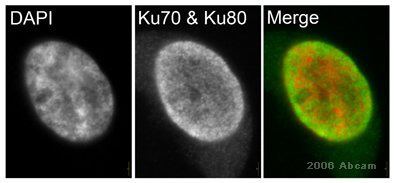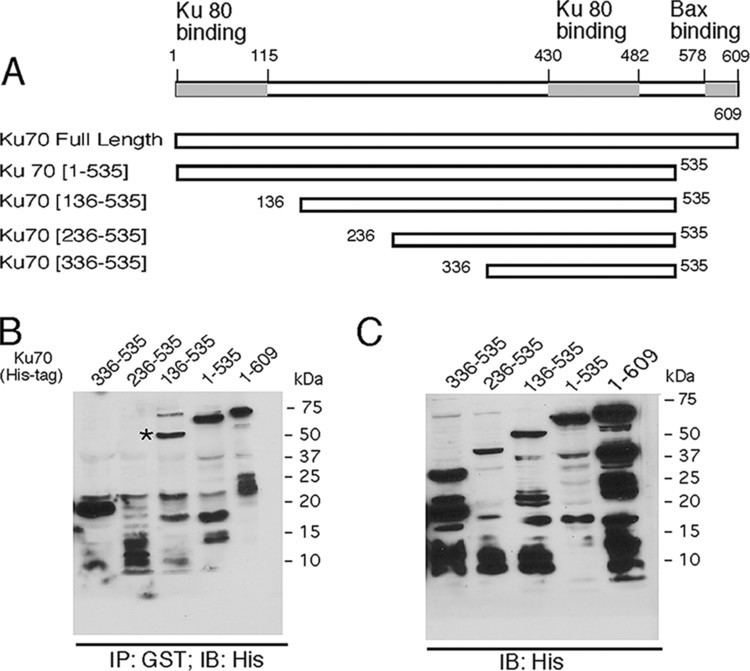Entrez 2547 | Ensembl ENSG00000196419 | |
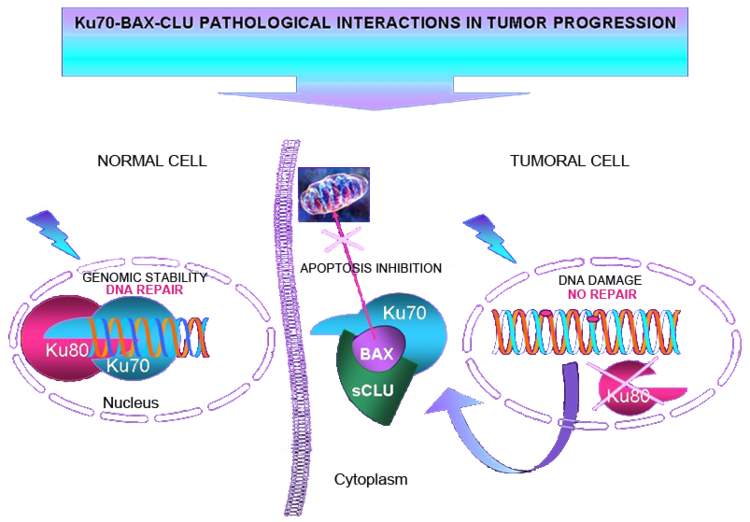 | ||
Aliases XRCC6, X-ray repair complementing defective repair in Chinese hamster cells 6, CTC75, CTCBF, G22P1, KU70, ML8, TLAA, X-ray repair cross complementing 6 External IDs MGI: 95606 HomoloGene: 37483 GeneCards: XRCC6 | ||
Function
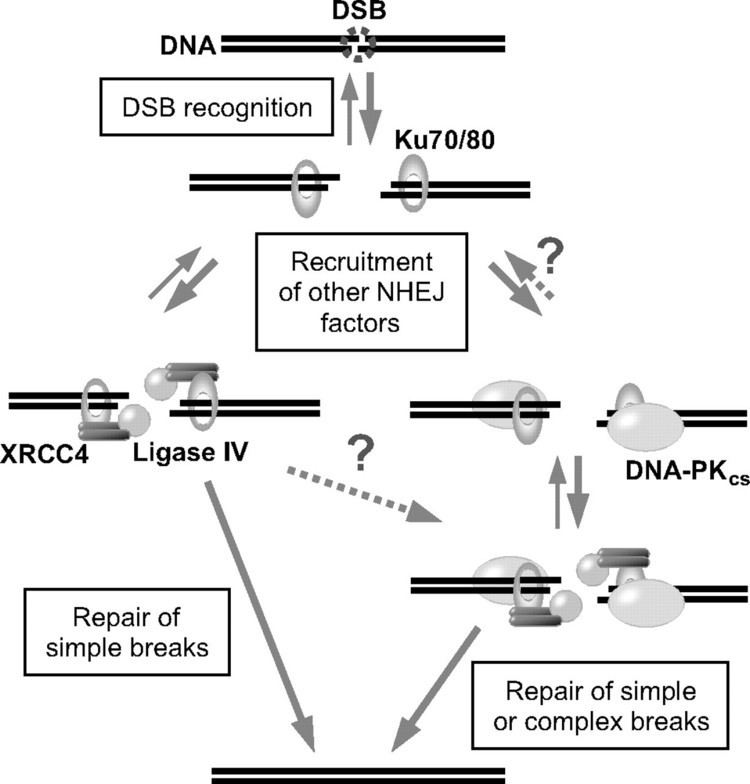
Together, Ku70 and Ku80 make up the Ku heterodimer, which binds to DNA double-strand break ends and is required for the non-homologous end joining (NHEJ) pathway of DNA repair. It is also required for V(D)J recombination, which utilizes the NHEJ pathway to promote antigen diversity in the mammalian immune system.
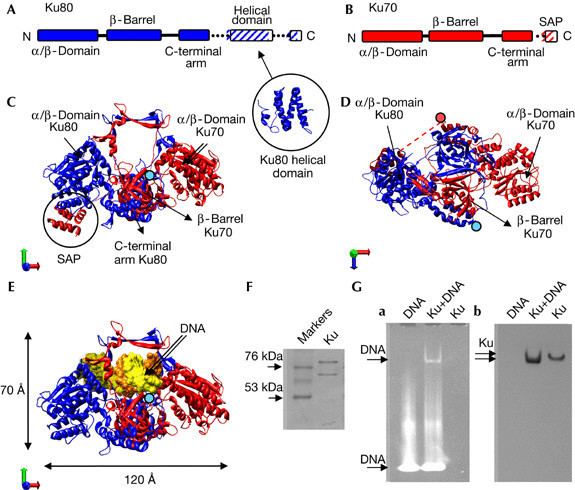
In addition to its role in NHEJ, Ku is also required for telomere length maintenance and subtelomeric gene silencing.
Ku was originally identified when patients with systemic lupus erythematosus were found to have high levels of autoantibodies to the protein.
Aging
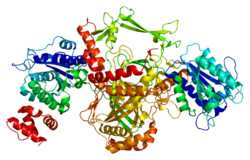
Mouse embryonic stem cells with homozygous Ku70 mutations, that is Ku70−/− cells, have markedly increased sensitivity to ionizing radiation compared to heterozygous Ku70+/− or wild-type Ku70+/+ embryonic stem cells. Mutant mice deficient in Ku70 exhibit early aging. Using several specific criteria of aging, the mutant mice were found to display the same aging signs as control mice, but at a considerably earlier chronological age. These results suggest that reduced ability to repair DNA double-strand breaks causes early aging, and that the wild-type Ku70 gene plays an important role in longevity assurance. (Also see DNA damage theory of aging.)
Nomenclature
Ku70 has been referred to by several names including:
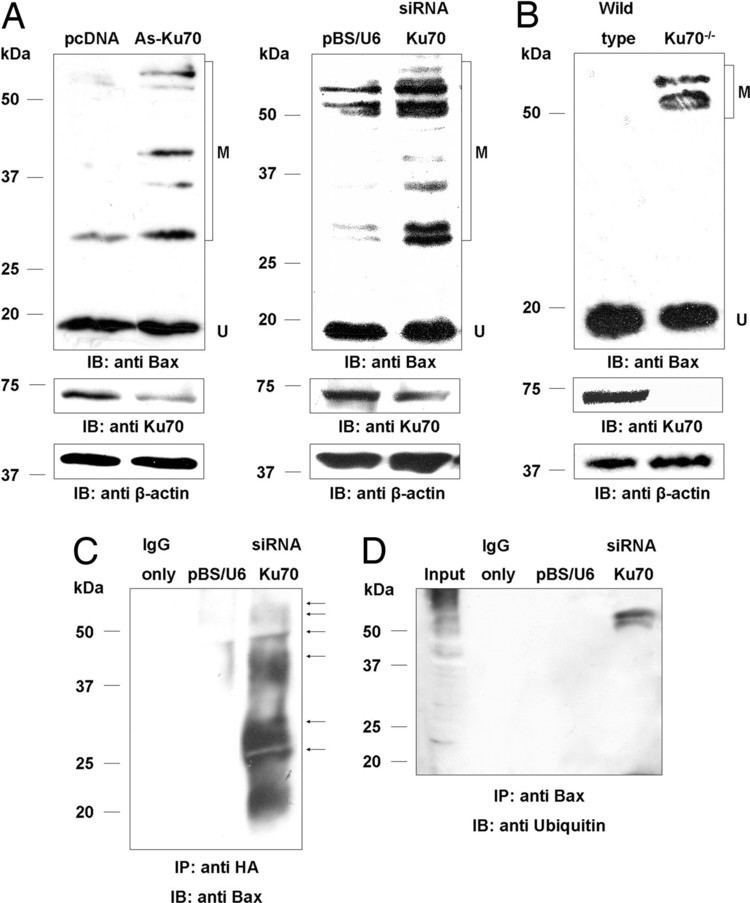
Interactions
Ku70 has been shown to interact with:
